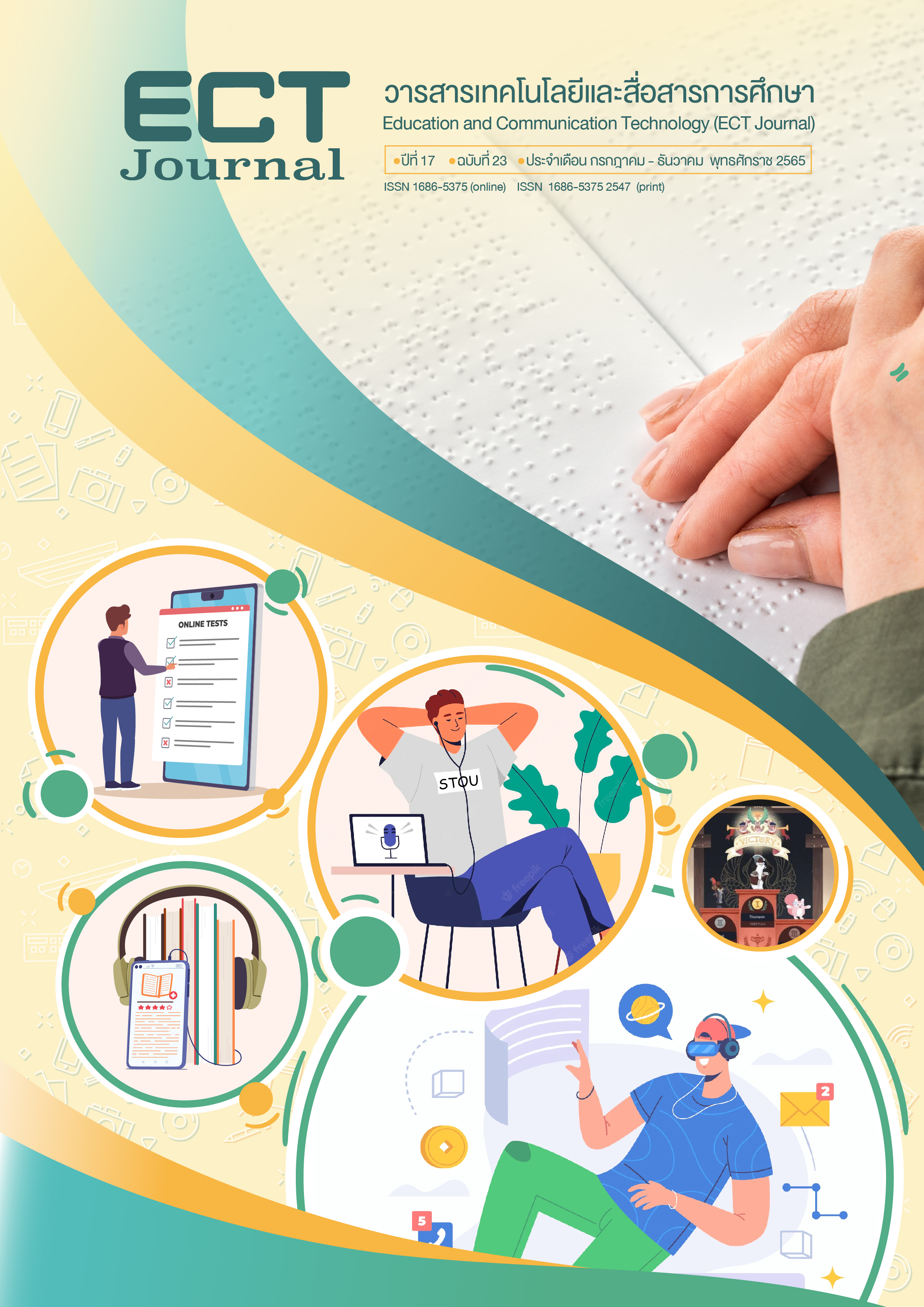Digital Learning Resources Design for Augmented Reality (Ar) and Virtual Reality (Vr) Using Standards of Educational Communications and Technology for Learning Management
Keywords:
Digital Learning Resources, Virtual Reality (VR), Augmented Reality (AR)Abstract
The purposes of this research were to 1) create a digital learning resource model for Augmented Reality (AR) and Virtual Reality (VR) using Standards of Educational Communications and Technology for Learning Management and evaluate the quality of developed digital learning resources, and 2) compare learning achievement of students between the experimental group and students in the control group. The samples of the study were 60 students in the Computer Education and Educational Technology and Communication Department and were selected by purposive sampling was separated into experimental group and control group were 30 students in each group.The process of research consists of three phases to 1) analyze and synthesize related literature and documents, 2) design and develop digital learning resources for Augmented Reality (AR) and Virtual Reality (VR) using Standards of Educational Communications and Technology for Learning Management, and 3) evaluate and compare learning achievement of students. Collected data by using evaluation questionnaires and analyzed data by descriptive statistics, content analysis, and t-test independent. The result reveals that: 1) The quality of a digital learning resource model was at an excellent level 2) The students’ learning achievement in the experimental group was significantly higher than that of those learning with conventional instruction in the controlled group at .05 levels, and 3) efficiency of digital learning resources meet the set of criteria standard in the online learning environment.
References
กิดานันท์ มลิทอง. (2548). เทคโนโลยีการศึกษาและนวัตกรรม. อรุณการพิมพ์.
AECT Board of Directors. (2012). AECT standards 2012 version: Educational technology: A definition with commentary (2nd ed.). Lawrence Erlbaum Associates.
Downloads
Published
How to Cite
Issue
Section
License
Copyright (c) 2022 มหาวิทยาลัยสุโขทัยธรรมาธิราช

This work is licensed under a Creative Commons Attribution-NonCommercial-NoDerivatives 4.0 International License.
1. ทรรศนะและข้อคิดเห็นใด ๆ ที่ปรากฏอยู่ในวารสาร ECT Education and Communication Technology Journal เป็นของผู้เขียนโดยเฉพาะ สำนักเทคโนโลยีการศึกษา มหาวิทยาลัยสุโขทัยธรรมาธิราช และกองบรรณาธิการไม่จำเป็นต้องเห็นพ้องด้วย
2. กองบรรณาธิการของสงวนลิขสิทธิ์ในการบรรณาธิการข้อเขียนทุกชิ้น เพื่อความเหมาะสมในการจัดพิมพ์เผยแพร่






